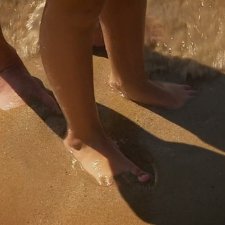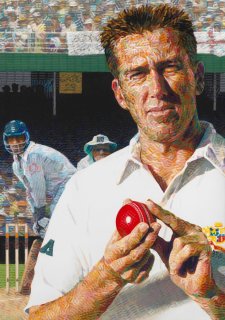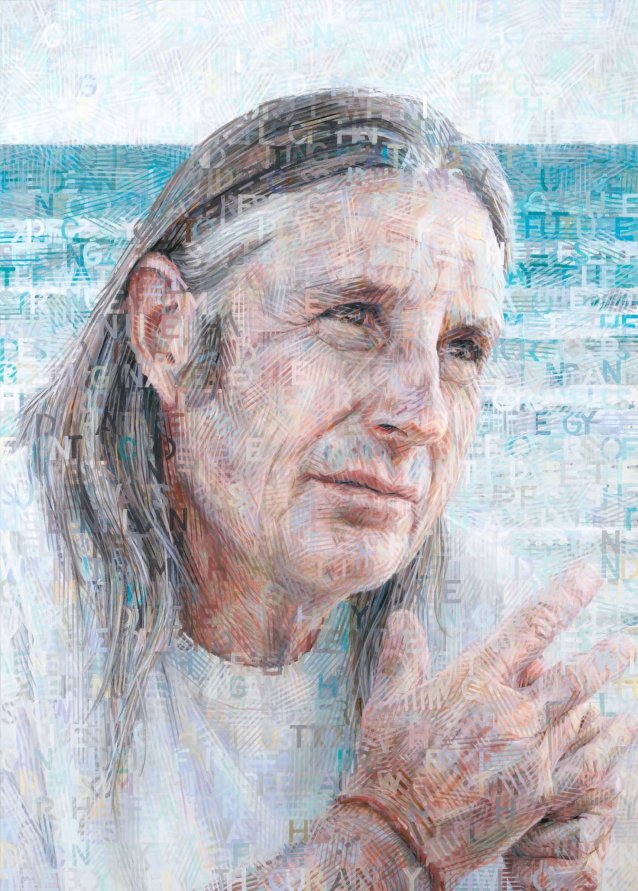Artist Sally Robinson describes her career and the creation of her portrait of Tim Winton.
- I often feel I didn't get a choice about being an artist because my mother was a self-taught artist, and would've gone to the London School of Art but the Second World War broke out. She always encouraged me and my siblings to engage ourselves in artistic activities. And every school holiday she had a new project for us to busy ourselves with. In the end I got to live her dream, I guess, I went to art school and here I am. I went to the National Art School in the 1970s, and I was initially interested in painting. But when I was there, I started to become very interested in photography and screen printing. I started to paint and adapted a way of painting with stencils because I had really enjoyed that textural, heavy textural effect I could get with the photo stencils and screen printing. I met Tim Winton years ago, in the pages of his novels, and I always thought that he would be a great character and a great face to paint. But I also knew that he was very reclusive and shunned any sort of attention. But then the Darling Prize was announced and I thought, oh, well, I'll ask if he'll be my subject. And the only way to contact Tim is through his agent. So I asked her and she said, "Look, he gets asked to be a portrait subject at least six times a year. He always says, 'no', so expect a polite refusal." I didn't get my refusal. And I kept sort of nagging and cajoling through his agent. And she kept saying, "You know, I'll ask him again, but I haven't heard anything yet." Time was running out. It was getting closer and closer to when I'd need to start the painting to get it in in time. And I won the Portia Geach Prize for a self-portrait. And I think Tim must've liked this, because I got a phone call from his agent saying, "If you can be at this particular remote headland on the coast of Western Australia next Tuesday afternoon, Tim will give you one hour of his time to take some photographs." And she said, "And be prepared, he hates having his photo taken." So I said, "Of course I'll be there." So from Sydney, it was more than 24 hours travel, including two plane flights, an overnight stay in what appeared to be a bikey, drug-dealing hotel, and then hiring a four wheel drive car and heading up the coast along a dusty track, until at this lighthouse on a beautiful headland, we finally met up with Tim. And I asked him if I could use some of his words, and he gave me permission to use an extract from, "The Wait and the Flow" from an essay in his autobiographical collection, called, "The Boy Behind the Curtain." And I have to say, he was a very engaging and warm personality. And I truly believe that his sort of reluctance to be a subject wasn't aloofness or arrogance in any way, it was more that he needs a sort of a quiet distant place from where he can observe mankind, rather than being the man observed. And by the end, Tim was starting to seem a bit more relaxed, though he did still knot his fingers together. And at the end, as we were saying goodbye, I sort of quipped, "Well, that wasn't so bad, was it?" And he said, "Well, no worse than going to the dentist." And I thought, wow, that bad? But anyway, it worked out well.
Related information



Tim Winton
'I am at the beach'
Portrait storyA series of excepts from Tim Winton's novel 'The Land's Edge'.



Tracks in the sand
Magazine article by Dr Sarah Engledow, 2008Dr Sarah Engledow discusses Quentin Jones's photograph of Australian author Tim Winton.



Pigeon coup
Magazine article by Christine Clark, 2006Glenn McGrath makes a strong impact on the English batsmen and the walls of the National Portrait Gallery.





